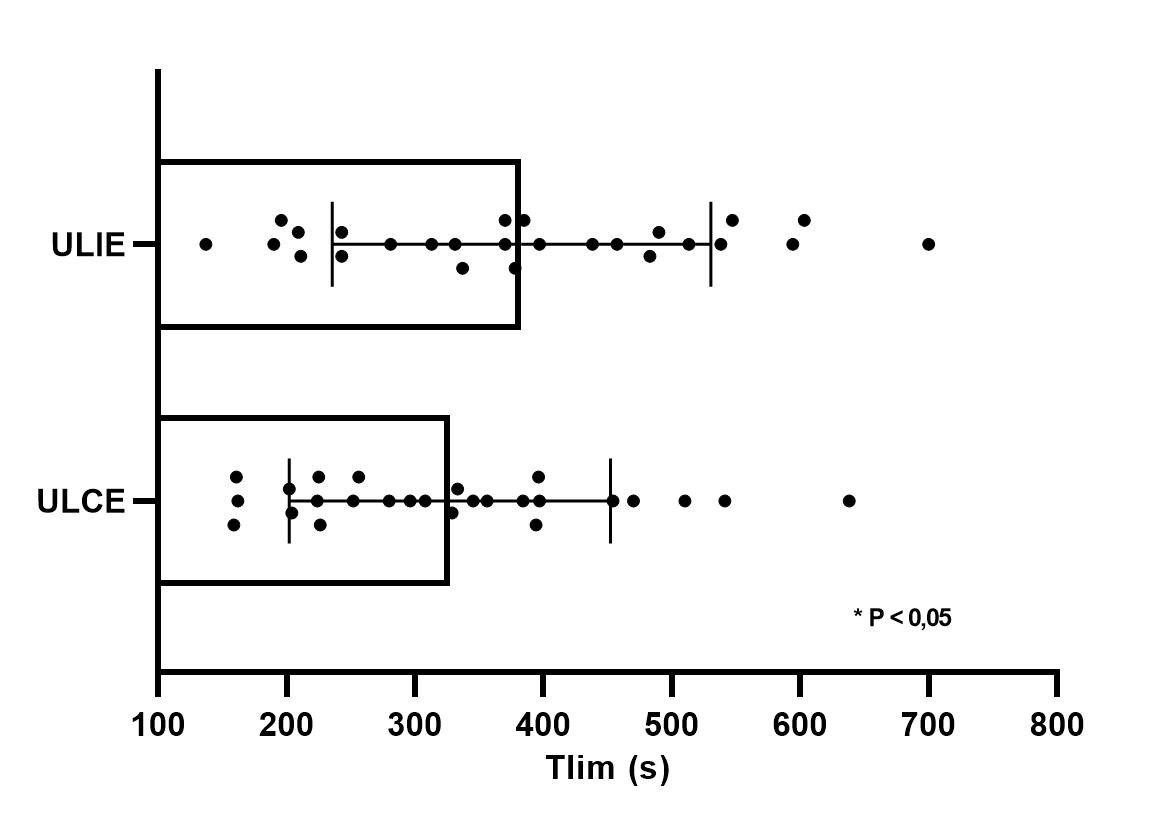Abstract
In patients with COPD, lower limb interval-load exercise may improve exercise tolerance and reduce ventilatory load compared with constant-load exercise. No studies were performed regarding the upper limbs. The aim of this cross-over study was to compare upper limb interval-load exercise (ULIE) with upper limb constant-load exercise (ULCE) to define time to exhaustion (Tlim) with related ventilatory and metabolic parameters.
Methods
Patients performed an upper limb incremental exercise test (IET) on day 1 and two random order endurance tests (ULIE and ULCE) up to the limit of tolerance (Tlim) on days 2 and 3.
The ULCE was set at 70% and IULE was established 1 min-on at 100% and 1 min-off at 40% of IET Wmax.
Results
From 2018 to 2021, we enrolled 26 patients (73% male, age 69±7 y, FEV1% 56±14, FEV1/FVC 53±10). Figure 1 shows the Tlim during endurance tests. 73% and 27% of patients had a longer ULIE and ULCE test, respectively. At peak of tests, similar cardiorespiratory involvement was assessed, except for dyspnea which was more pronounced in the ULCE test (BORG scale: 8.3±0.5 vs 6.5±1.8, P= 0.0478)
Conclusions
Upper limb interval-load exercise is more sustainable than constant-load exercise. Further studies will evaluate characteristics of responsive patients and benefits of its application during training programs.